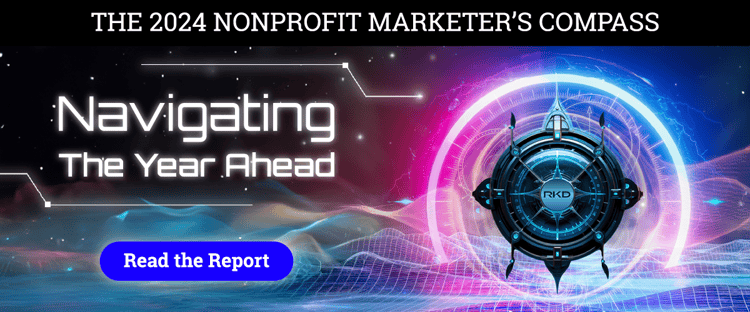We’ve heard the story before: Food banks are still coming off “the COVID high.” Over the last few years, many food banks have seen declines in fundraising metrics like retention and new donor growth.
But as we closed out 2023, Eddy Camas shared a look at our Q3 food bank benchmarks that pointed out signs of stabilization across donor lifecycles and new donor acquisition. As he said, “It's time for food banks to embrace current trends and shift to solutions focused on improving the future.”
But how do you get back on a path to positive growth?
Our 2024 Nonprofit Marketer’s Compass shared four beacons to help nonprofits navigate this new era of fundraising:
- Connect the dots
- Think dimensionally
- Be you
- Plan with care
They’re all critical for food banks—and nonprofits of all shapes and sizes—and will help your organization chart a course toward a more effective, empathetic and sustainable approach to fundraising and marketing.
But today we’re going to spend some time on the fourth beacon: plan with care.
What it means to plan with care
As food bankers, we tend to have large goals—our entire mission is to solve hunger in the areas we serve.
Big goals are important. They’re why many of us do what we do. But it’s important to balance those goals with actionable steps you can take to make progress. This is what the “plan with care” beacon is all about.
As food banks shift their mindsets and practices to adapt to this new era of fundraising, it’s important that you plan carefully and communicate your goals clearly. To avoid getting overwhelmed or burned out, we must develop a clear vision so that everyone understands what you want to achieve.
I encourage you to check out the 2024 Compass to see what this beacon is truly all about, but one of the ways you can plan with care is by continuously monitoring and evaluating the various aspects of your programs.
How food banks can leverage learning agendas to monitor their success
If your food bank doesn’t already have a learning agenda for 2024, now is a great time to adopt one to help guide your fundraising and marketing initiatives.
The objective of a learning agenda is to outline the key research questions, data needs and learning activities that will guide your food bank’s learning and adaptive management process.
Essentially, a learning agenda serves as a roadmap for systematically gathering and analyzing information to address knowledge gaps and test assumptions that ultimately improve the effectiveness of a program or a project.
A well-designed learning agenda will help your food bank:
- Identify key learning priorities. To do this, work with your team members to list the critical questions you need answered or any knowledge gaps that could be addressed.
- Guide data collection and analysis. With key learning priorities in place, your team will have a framework for the data that you need to collect so that you have actionable insights.
- Foster evidence-based decision making. Once you have the right data in hand, you’ll have empirical evidence to support your decisions.
- Promote organizational learning, accountability and transparency. With goals and learning priorities outlined, your team will have a clear framework for tracking progress, evaluating performance and driving growth.
- Support communication and collaboration. A learning agenda will help make sure that all your teams are aligned and focused on one common goal. If you’re not sure where to start, try asking yourself this question: “What are we looking to learn in 2024?”
It’s a simple question, but it can help guide you as you build your food bank’s learning agenda. Each learning agenda will vary depending on the specific size, needs and challenges of your food bank. A few common areas we see addressed in our clients’ learning agendas include donor retention, sustainer growth and understanding response motivators.
For example, after sitting down with your team, you may discover the need for a donor-retention learning agenda. Discussions may reveal a key learning priority should be centered specifically on transition donors—those who haven’t yet made it to your core group of supporters. If you’re looking to better understand why these donors aren’t retaining like other groups, data collection and analysis might focus on things like audience demographics, messaging tactics, creative, channel effectiveness and more.
With a clear roadmap in place, you can take actionable steps to achieve your goal of better donor retention.
If you’d like to learn more about learning agendas or brainstorm areas of opportunity for your specific organization, don’t hesitate to reach out to our food bank team!






Leave a comment: